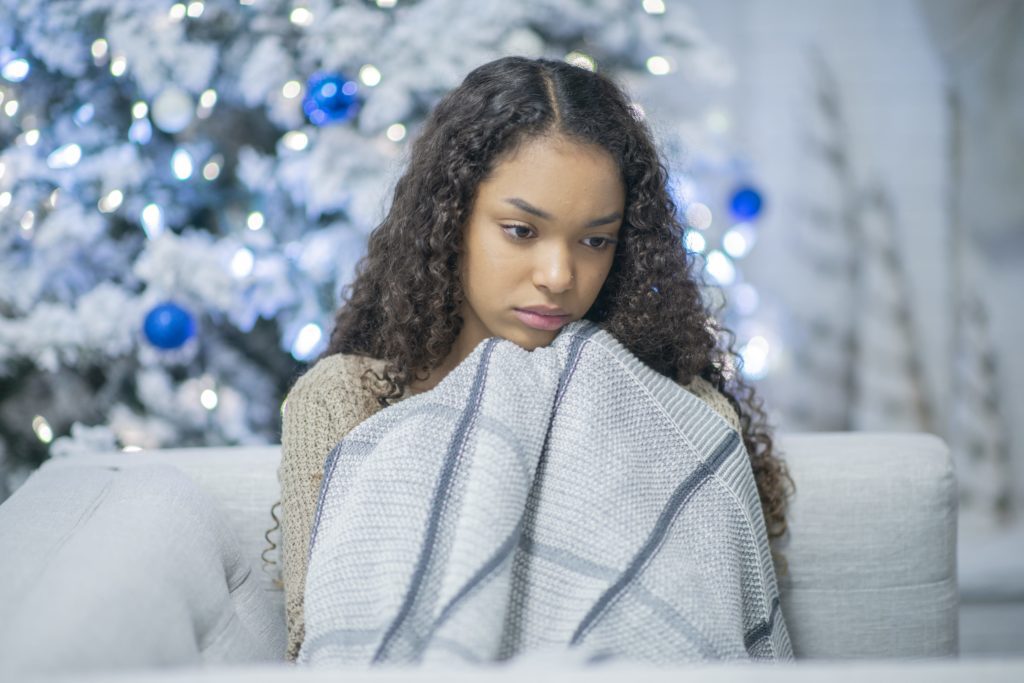8 Ways to Cope with Seasonal Affective Disorder (SAD)
Between 4% and 6% of people in the United States suffer from SAD: Seasonal Affective Disorder. Another 10% to 20% may experience a mild form of winter-onset SAD, often called the “winter blues.”
By Laura Childers

Alleviating SAD:
Let there be light.
There are all kinds of light boxes available to help combat seasonal depression. Use one first thing in the morning for 15-20 minutes to give your brain a big kick in serotonin levels.
Work it out.
Aerobic exercise releases endorphins, the body’s natural anti-depressant. It also increases circulation, which can improve the effectiveness of prescribed antidepressants.
Resist refined carbs.
High-carb “comfort” foods can give you a quick spike in serotonin levels, but will leave you feeling down and lethargic later. Instead, focus on a balanced diet, complete with vegetables and protein.
Take it outside.
Head outdoors, even if there is only a little bit of sunlight. Any sun exposure you get can will work to increase levels of Vitamin D and improve your mood.
Get in a rhythm.
Our bodies love routine, so try going to bed and waking up at the same time every day. Establishing a regular sleep-wake cycle, or “circadian rhythm,” can keep you feeling well-rested and balanced.
Book a vacation.
Spending a weekend in a warm, sunny locale can help you break out of your rut and start feeling better. Plus, it can give you something to look forward to.
Supplement smart.
To combat Vitamin D deficiency, doctors recommend taking a daily supplement (1,000-2,000 units). Some also recommend omega-3-rich fish oil, which has been shown to help alleviate symptoms of depression.
Don’t go it alone.
It’s easy to be reclusive when it’s cold outside and you’re feeling down. Resist the temptation. Spending time with family and friends can give you a huge mood boost.
SAD {Get the Facts}


What it is:
Seasonal Affective Disorder (SAD) is a type of depression that happens at the same time every year. For most people, it begins in late fall, worsens during the winter months, and subsides in early spring.
What causes it:
Experts attribute SAD to changes in daylight and day length. A lack of sunlight can alter brain chemicals that regulate sleep-wake cycles, energy levels, and mood. When it’s dark and the days get shorter, the body often produces less serotonin, the “happy hormone,” and more melatonin, which is linked to sleep and can cause lethargy.
Who it affects:


SAD can affect anyone, but it is more common in people who live in Northern climates. It’s also more common in women, younger people (15-55), and people who have a relative with a psychiatric condition.
Symptoms:
SAD presents just like non-seasonal depression; symptoms include loss of interest or pleasure in normal activities, excessive fatigue, difficulty concentrating, and a pervasively sad mood. Many people with SAD gain weight as a result of craving and eating more starches and sweets.
Treatment:
A doctor or psychiatrist can help you distinguish between whether you actually have SAD or simply the “winter blues”—a milder form of the disorder. The most common treatments for SAD are light therapy and antidepressant medications. Light therapy involves sitting by a special “light box” for 30 minutes a day, usually right after waking.

